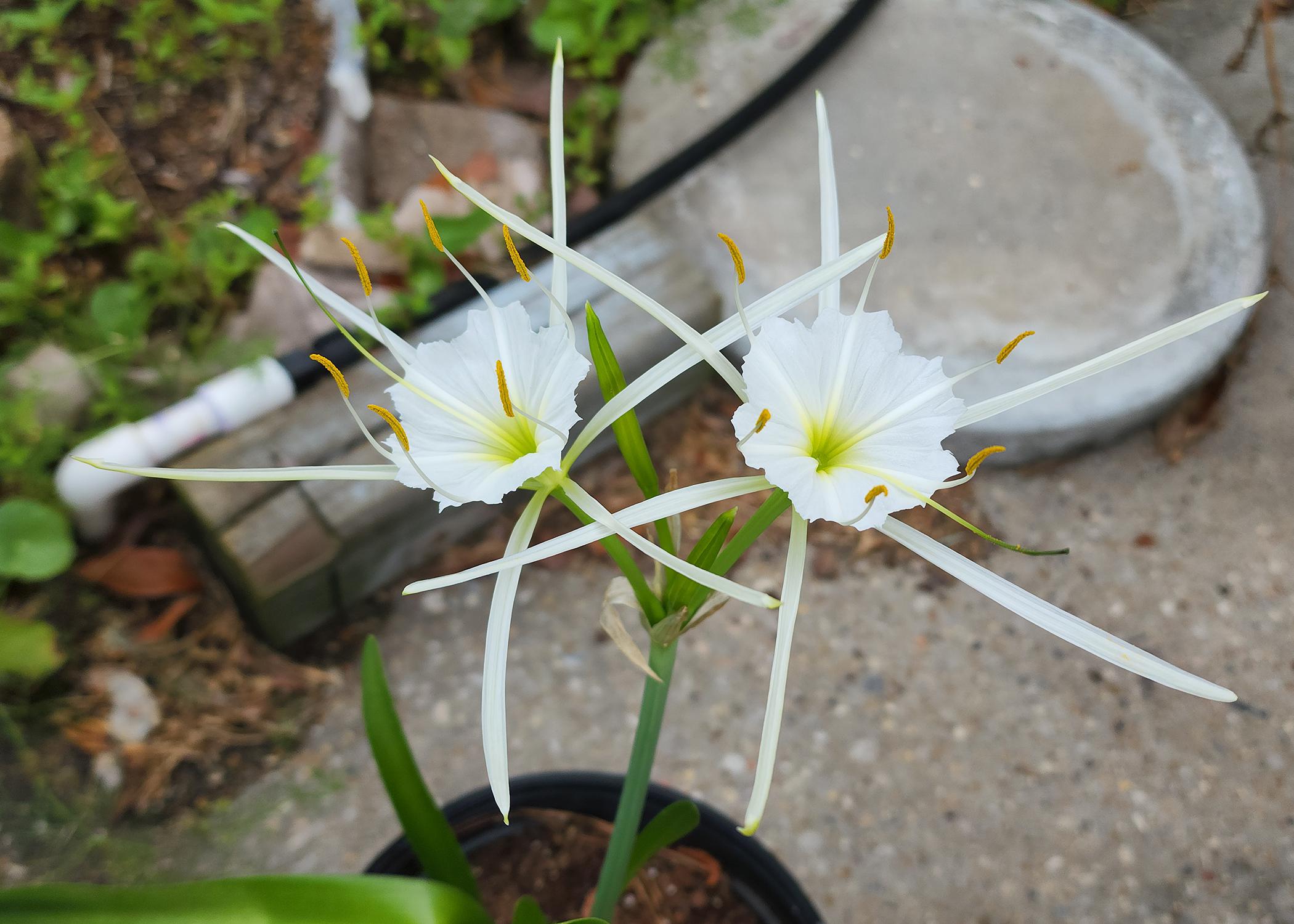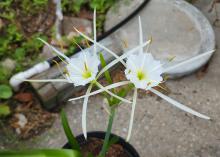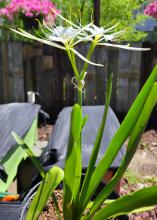Information Possibly Outdated
The information presented on this page was originally released on May 2, 2022. It may not be outdated, but please search our site for more current information. If you plan to quote or reference this information in a publication, please check with the Extension specialist or author before proceeding.
Spider lilies are easy for home landscapes
One of the most confusing things when reading about plants in the landscape or talking to other gardeners about them is the use of common names.
while it is understandable that we use common names -- remembering and using botanical Latin is hard -- it does lead to confusion. Some plants have two or more common names, and there are other instances where two different species have the same common name.
For example, consider the common name, spider lily.
Probably the most familiar plant known as spider lily is the primarily red flower that seems to pop up out of nowhere in the fall. These plants also are known as hurricane lilies, surprise lilies or the fun-to-say “nekkid ladies.” Botanically, they are known as Lycoris.
The other spider lily is a group of Southeastern native species that bloom in late spring and early summer. They are known botanically as Hymenocallis. I love, love, love these plants.
My first exposure to them was as I drove along the highway and saw these beautiful, spidery flowers popping up alongside ditches and wet areas in the spring. And then to my surprise, one magically appeared blooming in June in my Ocean Springs home landscape. I believe it is Hymenocallis occidentalis.
Up close, the flowers kind of look like a form of daffodil. The blooms are pure white with long, arching petals that have long filaments and dangling, orange stamens. An interesting feature is that the flowers are fragrant at night.
I nurtured that first plant and now have quite a few happily growing. You can watch the video I shared last year about the Hymenocallis plants in my home landscape: .
While I was recently signing copies of my book, “Southern Gardening All Year Round,” at the Mississippi Museum of Art, I bought another Hymenocallis species, Hymenocallis liriosome. This plant, found in the Mississippi Delta region, is smaller than the other species and blooms earlier. In fact, I was pleasantly surprised when it bloomed this past weekend.
Hymenocallis is easy to grow in our home gardens.
Mine have loved being grown in my side garden, which tends to stay wetter than normal. Wet soil is great for the Hymenocallis, but it also performs well in drier beds that are loose and have lots of organic matter worked into the soil. It’s no surprise that I’m trying to grow these in big containers this year.
Keep these plants well watered, especially during the bloom period. Spider lilies are perfect for combination planting with other high-moisture, tropical-looking plants around the landscape.




